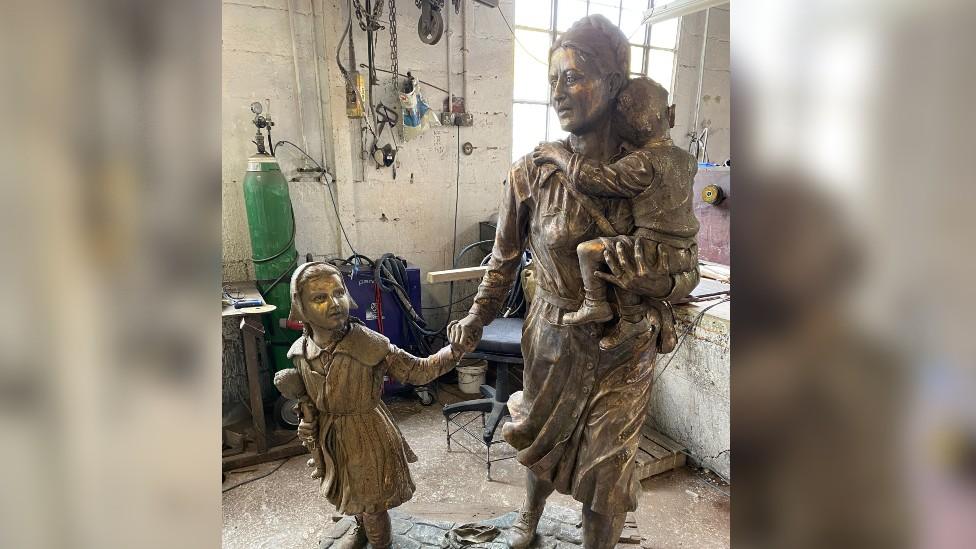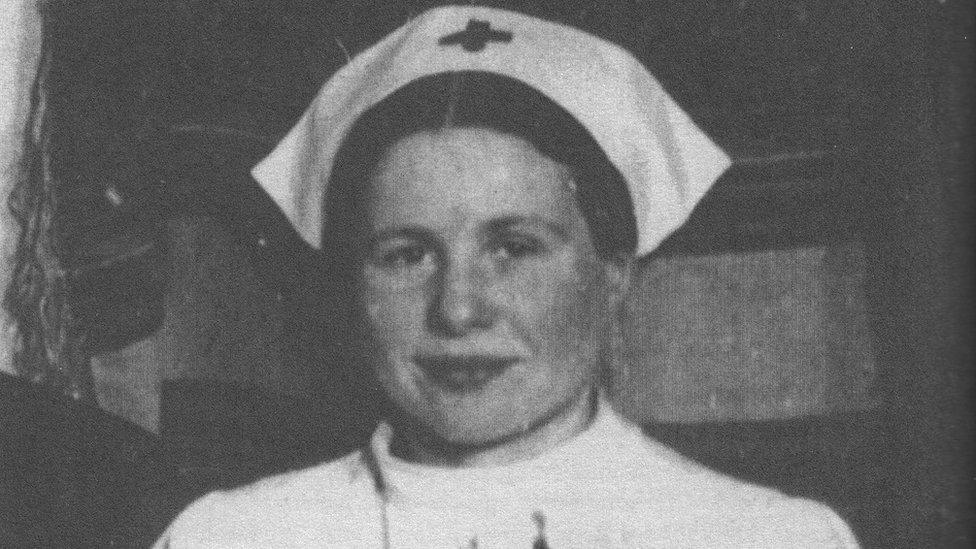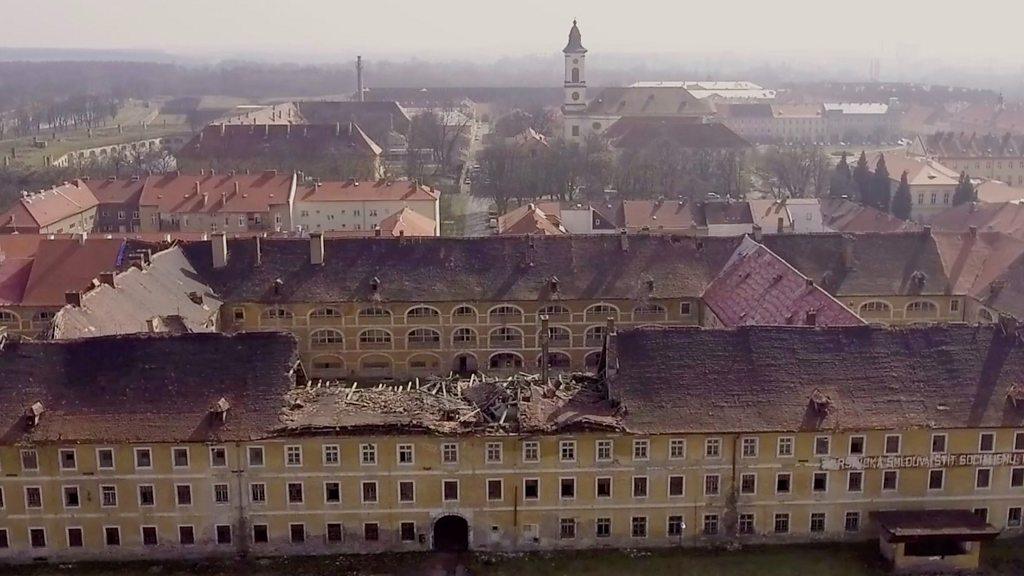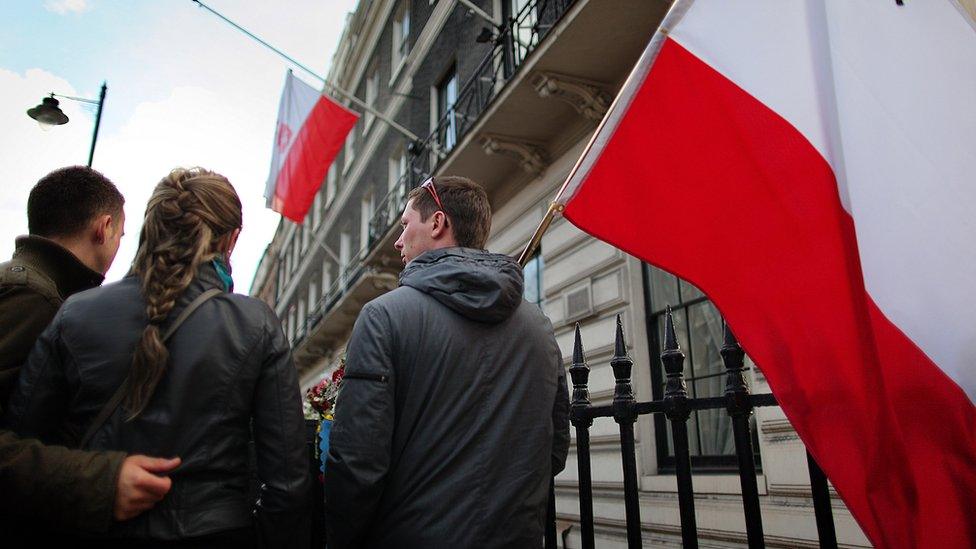Newark statue for WW2 Polish woman who saved hundreds
- Published

The artist behind the Irena Sendler sculpture took inspiration from video recordings of Holocaust survivors
A statue is being unveiled in honour of a Polish civil servant who saved hundreds of Jewish children from the Warsaw Ghetto during World War Two.
The sculpture of Irena Sendler, who passed away in May 2008, external, will stand in Newark, Nottinghamshire.
The town has several connections to Poland and plays home to a number of Polish war graves.
Town mayor Lisa Geary said the statue was a "fitting tribute" to Mrs Sendler's "inspirational" life.
During World War Two, Mrs Sendler - also known as Irena Sendlerowa - worked at the Department for Social Welfare and Public Health in German-occupied Poland.
She was part of a network of workers and volunteers in the department who smuggled Jewish children out of the Warsaw Ghetto.
She would provide them with false identity documents and find them shelter with Polish families or in care facilities.

Irena Sendler passed away in May 2008
In October 1943 Mrs Sendler was arrested by the Gestapo.
She withstood torture and imprisonment and was sentenced to death but escaped on the day of her scheduled execution after the guards escorting her were bribed.
Ms Geary said: "Newark is honoured to be able to provide a location for this statue which will be a fitting tribute to the life of Irena Sendler.
"Her story is truly inspirational, one of selfless service to others."

During World War Two, Irena Sendler smuggled Jewish children out of the Warsaw Ghetto
The statue will be placed at Fountain Gardens.
Sculptor Andrew Lilley said he had spent six months creating the tribute, which was largely funded by the Institute of Polish Remembrance.
"While I was sculpting I played video recordings of Holocaust survivors sharing their experiences and I took inspiration from an image of a Syrian refugee who was holding a baby," he said.
"I really tried to replicate the stress she would have been under."
The institute offered the statue to Newark, which has a significant number of Polish war graves.
Former Polish prime minister Władysław Sikorski was also once buried at Newark Cemetery.

Follow BBC East Midlands on Facebook, external, Twitter, external, or Instagram, external. Send your story ideas to eastmidsnews@bbc.co.uk, external.
Related topics
- Published6 April 2021

- Published20 February 2018

- Published1 July 2015
